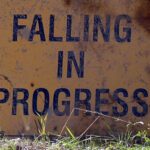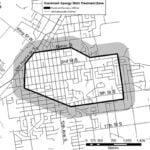Home »

Letting mine rescue competition go would be unwise
Op-Ed Commentary
Fernie is named after William Fernie, one of the men credited with creation of the Crow’s Nest Pass Coal Company, getting the railway built and opening Coal Creek mine in 1897.
Coal was discovered in 1845 by a Jesuit missionary who worked with the Kootenay and Flathead Ktunaxa. Then in 1873 Michael Phillips discovered coal and had a Geological Survey of Canada geologist map areas of coal in this area.
Mines were built at Michel/Natal in 1901, at Morrissey in 1902, at Hosmer in 1906 and Corbin in 1908.
Edgar Kaiser opened open pit strip mining in 1968, followed by Fording Coal Ltd. in 1974 and Line Creek Mine and Greenhills Mine in 1978.
When Westar shut down Teck Cominco re-opened Balmer Mine calling it Elkview Coal Corp. and in 1992 Fording Coal Ltd. bought and re-opened the Westar Greenhills Mine which was eventually acquired by Teck. Presently North Coal is preparing to open its mine.
This brief history of mining is to demonstrate the importance of coal for over 150 years to the history of Fernie.
Coal is the heritage that makes Fernie unique and that has visitors referring to it as a “real” town.
Mining has left a lasting legacy that continues today by the hosting of mine rescue competitions, the Miners Walk and the citizens employed at neighbouring mines.
Fernie hosted the first mine rescue competition in 1915 and since then competitions have continuously been a valued component of this town. So much so that 28 years ago Fernie initiated the National Western Region Mine Rescue Competition that is held every two years. The competitors that attend are the “best of the best” having attained top distinction at events prior to competing here. Teams have come from as far away as Ontario, the Northwest Territories, Yukon, all western provinces and the United States.
Approximately 800 to 1,000 people fill up hotels, restaurants and shop locally for the week that they are here.
This year underground and surface events will be held on September 6 and 7. This competition is the most prestigious event of its kind in North America, limited to twenty teams it routinely turns teams down for participation.
Some time ago reliable sources stated that the National Region Competition scheduled for this September could be the last one held in Fernie. It’s said a city official has determined that this event is of no value to Fernie as at the first meeting of the committee that official asked why Fernie was doing this and then commented that “a mountain bike event would bring more money into the city than this event does,” and suggested that the committee look for another community to host this event in the future. This would be no problem as for several years it has been made clear by some members of the committee that they would love to take over this event and bring it to their own province.
But this prestigious and international event hasn’t ever been a direct funding opportunity for the City of Fernie, although it provides great economic benefit for businesses in town. It was initiated because it was seen as an important part of Fernie’s historical heritage of mining and mine rescue.
On the Wall of Fame in city hall hangs a photograph of Albert Littler, a Fernie citizen who won national acclaim for his work in mine rescue. Although Fernie hasn’t had a mine of its own since Coal Creek shut down in 1958, mine rescue has still been an important part of what is valued by this community. There are employees who work at neighbouring mines living in Fernie; some of the members of the Fernie Fire Department compete in mine rescue events and citizens volunteer during the competition.
As Fernie initiated this particular competition it hosts the event. The committee meets in Fernie every month for nearly a year and consists of two groups, one being the City of Fernie host sub-committee comprising of city staff, council members, mining representative, museum rep and media partner and they are in charge of providing the venues for the tasks, organizing the awards dinner, the meals for competitors, volunteers and support people, media attention and other necessary duties, as well as providing needed manpower, helping to find grants from various businesses and corporations and also the city contributes up to $10,000 to the cost of the event all the while making sure the budget stays on track.
The other sub-committee is made up of ministry personnel, judges, and individuals representing the various regions and they plan and execute all the tasks, find volunteers and make sure the actual competition of underground and surface tasks is accomplished in a successful way. For 28 years these two groups have worked together in a very productive and collaborative way that has achieved praise for this event.
It’s said this isn’t the norm this year and there is a belief and strong fear that this competition no longer has the support it has had in the past.
A neighbouring mayor said he will snap up this competition if it is discarded by Fernie, adding that if the last vestige of mining is removed from here then perhaps Fernie no longer needs to be included in the tax sharing agreement, which is to be soon revisited for re-negotiation. Fernie is not geographically in the tax district of the Teck mines and was included only because other partners agreed to it. With this expressed sentiment this could lead to a loss that would dramatically affect this town and all the amenities it offers.
In 1931 Fernie went into receivership. City council was dissolved and the province appointed a government administrator. It wasn’t until 1945 that a council was elected again. In the 1990s the city was nearly bankrupt; it took nearly three decades to accumulate $11 million of reserves and gain a triple A rating to borrow. The province requires that all local governments have a certain amount of reserves in place for emergencies.
When the 2016 census placed the population over 5,000, the city was required to pay for 70% of policing costs instead of 30% that translated into approximately $890,000 resulting in an increased cost of $200 per tax bill per year. Put in context, if less than a million dollars is costing taxpayers that amount for policing, what will it take to replace the nearly $8 million that has been taken from reserves to construct the public works building? Add the projected cost of $10.5 million for a new fire hall and the $20 million to be borrowed for a multi-use building and the costs of daily maintenance and new hires for these buildings will probably bring the total to more than $40 million.
This means that either taxes will go up dramatically or repayment of loans will last longer than the buildings themselves will or both.
Fernie Citizens need to read this information and research to verify what has been written as what has been pointed out will affect the town, its history and heritage and all individuals who call Fernie home in one way or another.
Lead image: A file photo showing the Fernie Mine Rescue competition. e-KNOW archives photo
– Mary Giuliano was Mayor of Fernie between 2011 and 2018 and a multi-term city councillor before that.








